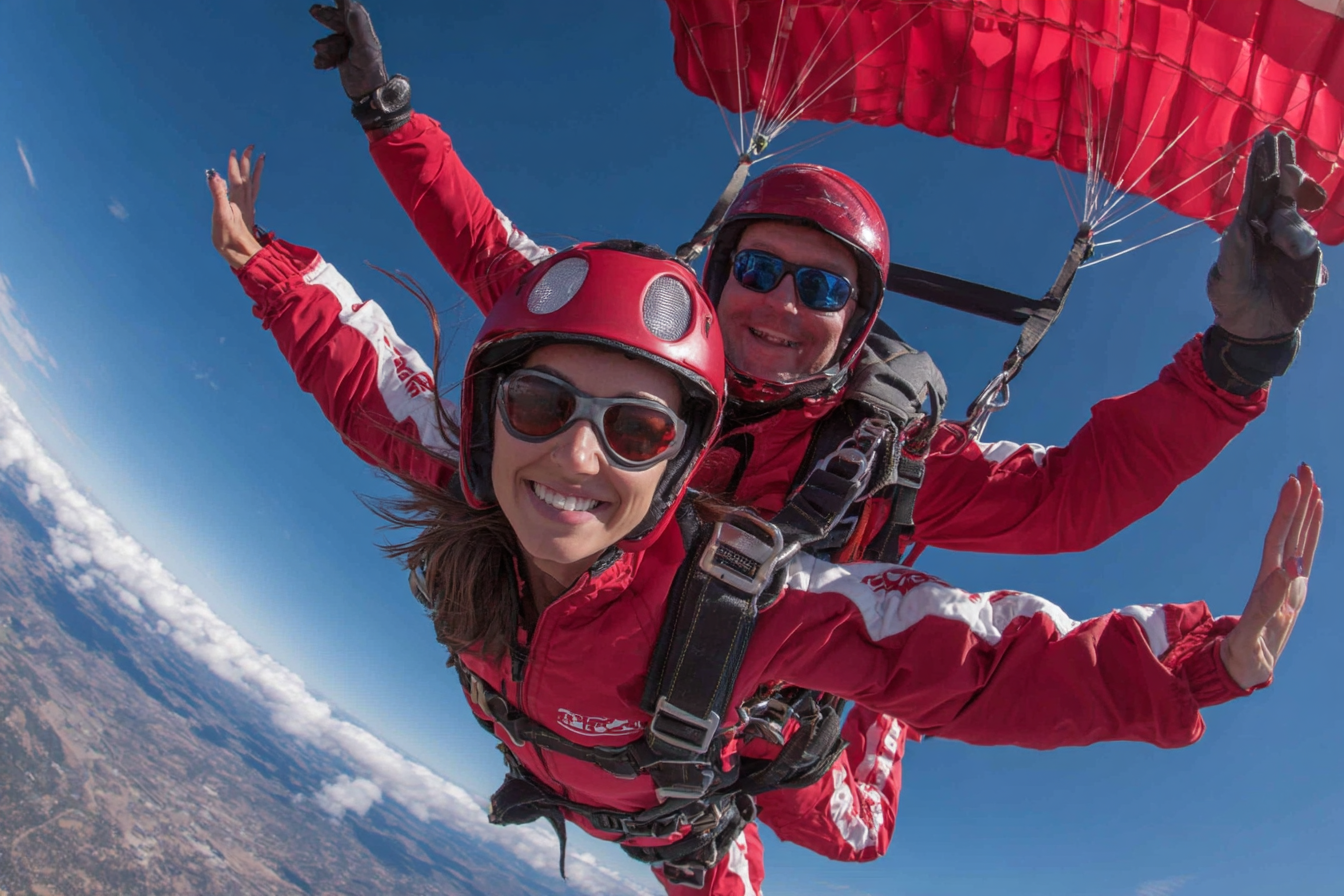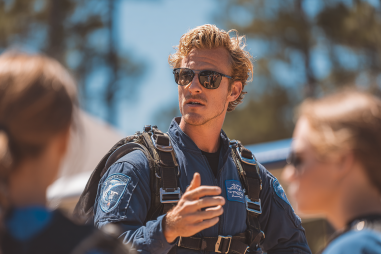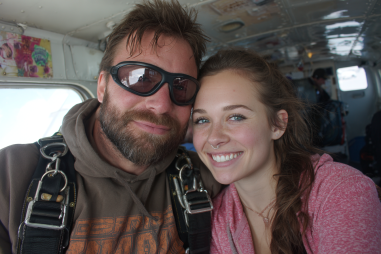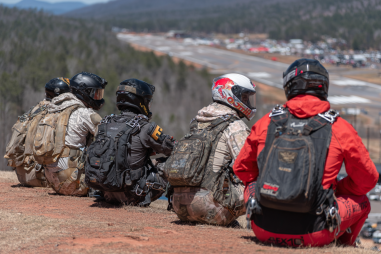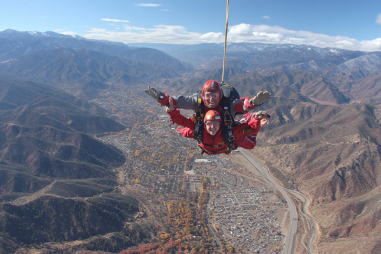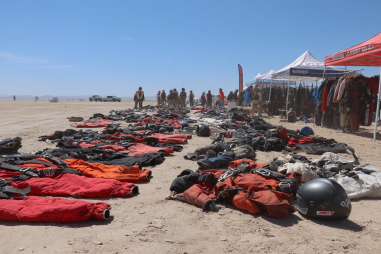Skydiving is an exhilarating sport that offers unmatched thrills and a unique perspective on the world. If you’ve ever dreamed of soaring through the sky and experiencing freefall, the first step is finding the right skydiving training courses to get you started safely and confidently. Whether you’re a complete beginner or considering a more advanced route, understanding the different types of training programs and what to expect can make all the difference in your skydiving journey.
Introduction to Skydiving Training Courses
Getting into skydiving requires more than just a brave spirit; it demands proper training and preparation to ensure safety and enjoyment. Skydiving training courses are designed to teach you the necessary skills, from equipment use to freefall techniques, under expert supervision. These courses vary based on your goals, whether you want to begin with a tandem jump or work toward solo freefall skydiving. By taking the right course, you’re building a solid foundation that will make your first jump a safe, thrilling experience.
Types of Skydiving Courses: Tandem, AFF, Static Line
Skydiving training courses come in different forms to accommodate various experience levels and learning styles. Understanding these options helps you choose the right path.
- Tandem Skydiving: The most popular entry point for beginners, tandem skydiving involves being harnessed to a certified instructor. You experience the jump with someone controlling the parachute and freefall, allowing you to focus on enjoying the adrenaline rush. Training is minimal but includes crucial safety briefings.
- Accelerated Freefall (AFF): This course is designed for those who want to learn to jump solo quickly. AFF involves ground school training followed by jumping with two instructors holding onto you mid-air to guide your fall. After passing each level, you proceed to more advanced jumps under less supervision.
- Static Line: Ideal for beginners aiming for a more gradual learning curve, static line training involves a parachute that automatically deploys as soon as you exit the aircraft. The focus is on body positioning and landing safely before progressing to freefall jumps.
What to Expect in a Typical Training Course
Skydiving training courses usually start with ground instruction that covers vital safety information, equipment details, and body positioning techniques. You’ll learn about how the parachute system works, emergency procedures, and how to communicate with your instructors during the jump.
For tandem jumps, the briefing often lasts about 30 to 60 minutes, focusing on harnessing, body position during exit, freefall, and landing. AFF and static line courses involve more extensive ground school sessions that can last several hours to a few days, depending on the school and course intensity.
Practical training on the ground involves practicing exits, body postures, parachute deployment, and landing techniques. Then you’ll board the plane and take to the skies, initially alongside instructors for tandem or AFF, or performing static line jumps as directed.
Duration and Cost Considerations
The length and price of skydiving training courses vary widely. Tandem skydiving is usually a single-day experience and costs range from $200 to $300 per jump, including equipment and instructor fees.
AFF courses are more extensive and can span multiple days or weekends, depending on how fast you progress. The total cost for the initial AFF training and first jumps can range from $1,500 to $3,000 or more, covering ground instruction, multiple jumps, equipment rental, and instructor supervision.
Static line courses often fall somewhere in between, with prices varying but generally less expensive than AFF, and the training duration can extend over several sessions as you advance.
Keep in mind that additional jumps, gear purchases, and certification fees may add to the overall expense as you continue skydiving.
Safety Protocols During Training
Safety is the top priority in all skydiving training courses. Instructors adhere to strict guidelines established by national and international skydiving organizations. Before jumping, you receive comprehensive safety briefings covering emergency procedures like deploying your reserve parachute and responding to unexpected situations.
Throughout your training, expect meticulous checks of your gear, weather assessments, and constant communication with instructors. Additionally, many drop zones use modern equipment with automatic activation devices (AADs) that deploy your parachute if you’re unable to do so manually, adding an extra layer of protection.
Rest assured, certified instructors are highly trained professionals dedicated to maintaining a safe and supportive environment for learners.
Certification Opportunities Through Training
Completing skydiving training courses can lead to official certifications that qualify you for solo jumps and membership in skydiving organizations. For example, the United States Parachute Association (USPA) issues licenses based on demonstrated skills and jump experience.
The typical certification levels include:
- Category A: For beginner solo jumpers who have completed their initial training and made a minimum number of jumps with specific skill proficiency.
- Category B, C, and D: Advanced licenses that allow jumpers to participate in more complex skydiving activities such as night jumps, canopy formations, and coaching roles.
These certifications not only validate your skills but also grant you access to insurance, jump centers worldwide, and greater opportunities within the skydiving community.
Tips for Choosing the Right Course for You
With various options available, selecting the best skydiving training course depends on your goals, budget, and comfort level. Here are some tips to help you decide:
- Assess Your Goals: Are you aiming for a single thrilling jump, or do you want to become a licensed solo skydiver? Tandem is perfect for first-timers, AFF suits those committed to learning freefall quickly, and static line is great for a gradual progression.
- Research Drop Zones: Choose certified and reputable drop zones with experienced instructors and positive reviews. Safety history and instructor credentials are key factors.
- Consider Location and Facilities: Proximity to you and the quality of on-site equipment and training facilities will enhance your experience.
- Understand Costs: Factor in not just the initial training fees but also equipment rental, certification, and potential repeat jumps.
- Ask Questions: Don’t hesitate to contact the training centers to inquire about training schedules, instructor-to-student ratios, and emergency procedures.
Getting Ready for Your First Jump
The thrill of your first skydive begins with proper preparation. Dress comfortably and wear shoes that will stay secure during your freefall, such as sneakers or lightweight boots. Arrive rested and well-hydrated, and maintain a positive mindset to help manage nerves.
During your training, listen carefully, ask questions, and practice the drills thoroughly. Your instructors will guide you every step of the way — trust their expertise and focus on mastering the basics. Once you’re strapped in and ready for takeoff, soak in the excitement and visualize a safe and successful jump.
Beyond technique and thrills, skydiving offers an unforgettable sense of accomplishment and a new community of friends who share the passion for flying through the sky.

